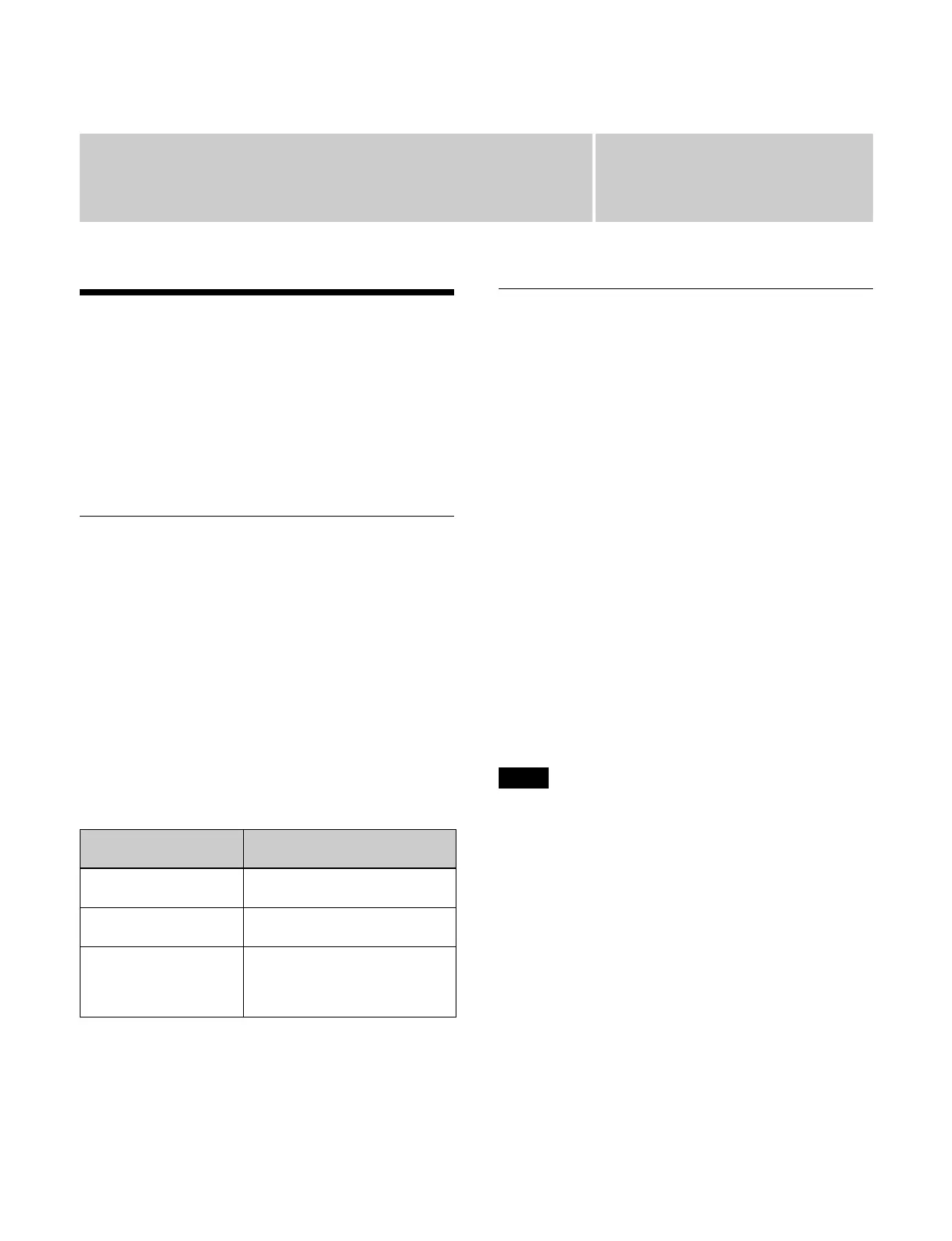Chapter
176
10
Frame Memory
Overview
A frame memory is a function that freezes and captures a
single frame of the input video for use as content. You can
also specify a range in the input video to create a clip
(frame memory series of still images).
You can also import a still image or video file created
ex
ternally for use as frame memory content.
Areas Used for Frame Memory
Two areas are used for frame memory.
Frame memory work area: An area for creating and
work
ing with content.
When the system is powered off, the content in the
frame memo
ry work area will be lost.
Content storage: Area for saving created content and
i
mported content.
When used for frame memory operations, the target
co
ntent is loaded into the frame memory work area.
Number of content resources that can be stored
The number of content resources (number of frames) that
can
be stored in the frame memory work area is given
below.
For combined content, the number of content resources
(
number of frames) that can be stored is halved.
Frame Memory Input and Output
There are two systems for frame memory input: frame
memory source 1 bus and frame memory source 2 bus.
The frame memory source bus must be assigned to the
box on which you want to create still images (freeze) and
video (record).
For details about the configuration method, see “Setting
a Bus” (page 398).
There are 16 channels for frame memory output: FM1 to
FM1
6. You can store and recall an image on each frame
memory output channel. By assigning FM1 to FM16 to
cross-point buttons, you can use frame memory output as
input content.
The two frame memory input systems are assigned to two
consec
utive frame memory outputs (odd-numbered and
even-numbered frame memory output combinations,
such as FM1 & FM2 or FM3 & FM4).
Frame memory source 1 bus is used on the odd-numbered
f
rame memory output channel, and frame memory source
2 bus is used on the even-numbered frame memory output
channel.
• The number of frame memory output channels that can
be u
sed will vary depending on the system signal
format.
• Frame memory operates on a box-by-box basis. For 4K,
ei
ther channels FM1 to FM6 or FM7 to FM12 must be
assigned to the frame memory of a box. If the same
channels are assigned to different boxes, the operation
of the boxes is linked.
For details about the configuration method, see
“Setting DME/Frame Memory Channels” (page 399).
• When content is loaded, it is loaded into the frame
m
emory of all boxes in the switchers.
• Created content can only be used on the box to which
th
e frame memory source bus was assigned before
saving to content storage. To use created content on
another box, save the content in content storage,
temporarily unload it and then reload it.
Signal format
(frequency)
Number of content resources
2160P 2SI
(59.94, 50)
Approx. 1640 frames
1080P
(59.94, 50)
Approx. 6500 frames
1080i
(59.94, 50)
Still image content: About 6500
fram
es
Video content: About 3250
fram
es
Notes
